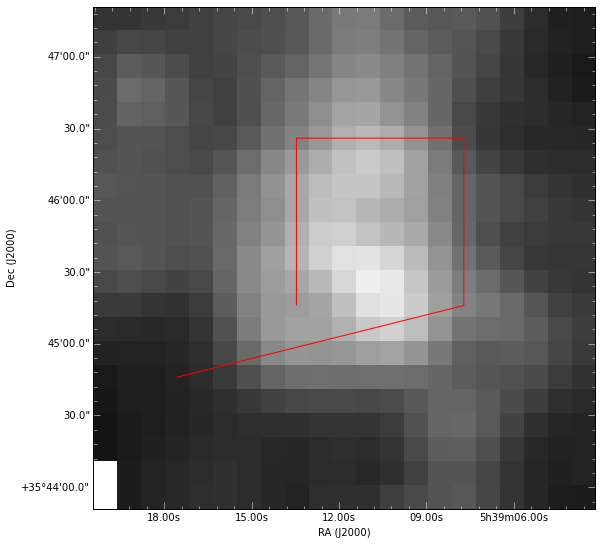tl;dr version: IPython notebook here, code available on github
Current state of affairs
Position-velocity diagrams with arbitrary position axes have been a common tool for studying spectra for a long time, probably because the "native" format of long-slit spectra on CCDs is effectively a position-velocity diagram.
It's becoming more common now to have data cubes (PPV) than 1D or 2D spectra. But PV diagrams still have utility. Unfortunately, there aren't very good tools to produce them.
There are plenty of tools that can slice along any of the native axes of a data cube. If you take your data cube in RA/Dec space, extracting along lines of constant RA or Dec is trivial (GAIA can do it natively, but it's easy to slice a cube in IDL or python).
However, if you wanted to slice along lines of constant GLON or GLAT, you'd have to reproject the cube to use this approach. There are nice tools that implement cube rotation: CASA has an imrebin recipe and STARLINK has a rotation tool (though I can't find it now...).
However, this approach is terribly inefficient if you want slices at multiple different angles, and it's outright awful if you want to track a filament.
An alternative approach
The alternative is to interpolate between pixels along a specified axis. This can be done very efficiently in python using scipy's map_coordinates, which by default does a cubic-spline interpolation at the specified points.
I've started to build a tool to extract position-velocity diagrams on this basis. It's fully functional, but doesn't do anything interactive just yet. pvextractor is available on github.
There is a complete example demonstrating its use here.
In short, though, it allows you to describe paths like this:

and extract them into position-velocity diagrams like this:
